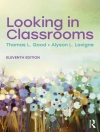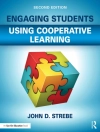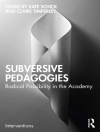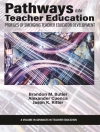Assessing Disorganized Attachment Behaviour in Children lays out an evidence-based model for working with and assessing children with disorganized attachment and their adult carers: families whose extreme, erratic and disturbing behaviour can make them perplexing and frustrating to work with.
The model is designed to identify key indicators and explanatory mechanisms of child maltreatment: disorganized attachment in the child, a parent’s unresolved loss or trauma, disconnected and extremely insensitive parenting, and low parental mentalisation. The book also outlines ways of assessing children for disorganized attachment and carer capacity, and proposes interventions.
Accessible and practical, this book is essential reading for child protection professionals.
Daftar Isi
Dedication. Acknowledgements. Introduction. David Shemmings, Professor of Child Protection Research, University of Kent and co-Director of the university’s new Centre for Child Protection, and Yvonne Shemmings, Continuous Professional Development Specialist. 1. The Maltreatment Pathway Model and its Components. David Shemmings and Yvonne Shemmings. 2. The Notion of ‘Enhanced Relationship Skills’. David Shemmings and Yvonne Shemmings. 3. Using Enhanced Relationship Skills in Practice. Yvalia Febrer, Project Director, Frontline, London. 4. Exploring ‘Mechanisms of Maltreatment’ in a Family. Alice Cook, Family Assessment Practitioner, St Michael’s Fellowship, London. 5. Identifying Low Mentalising Capacity using the Adult Attachment Interview. David Wilkins, Principal Child and Family Social Worker, Enfield, London. 6. Using a Guided Parenting Task. Lissil Averill, Social Worker, Great Ormond Street Hospital, London. 7. Using a Strange Situation Procedure and Guided Parenting Tasks. Yvonne Shemmings and Michelle Thompson, Senior Manager, Young Mums and Dads Project, St Michael’s Fellowship, London. 8. Working with Disconnected or Insensitive Parents by Increasing Mentalising Capacity. Yvonne Shemmings. 9. Using Modified Story Stems. David Wilkins. 10. Exploring Children’s ‘Inner Worlds’. Fran Feeley, Social Worker, St. Michael’s Fellowship, London. 11. Using the Child Attachment Interview. David Phillips, Manager of the Moorfield Family Assessment Centre, Enfield, London. 12. Working with Children and Families to Promote a Secure Base. Claire Denham and Jo George, Social Workers, Lewisham, London. 13. Attachment to People and Place with Traveller Families. Mel Hamilton-Perry, Social Worker, Norfolk, specializing in work with Gypsy and Traveller Families. 14. Introducing the ADAM Project across the whole Children and Families Department in Enfield, London. David Wilkins. 15. Introducing the ADAM Project in Lewisham, London. Tania Young, Lewisham Children’s Social Care, London. 16. Using Pathway Model Components as Counter-indicators in a Complex Child Protection Referral. Henry Smith, Senior Practitioner, Richmond, London. 17. ‘Fake it till you make it’: Can Deliberately Adopting Secure Attachment Behaviour Lead to Secure Attachment Organisation? Sonja Falck, Psychotherapist and Executive Coach, Harley Street, London, and David Shemmings. Conclusion. David and Yvonne Shemmings.
Tentang Penulis
Yvonne Shemmings is a Continuing Professional Development Specialist and has trained professionals in over 30 child protection organizations. She is a qualified social worker and a senior manager, and her work includes the use of attachment theory in practice. Both David and Yvonne have published widely in the fields of child and adult attachment and child protection.












